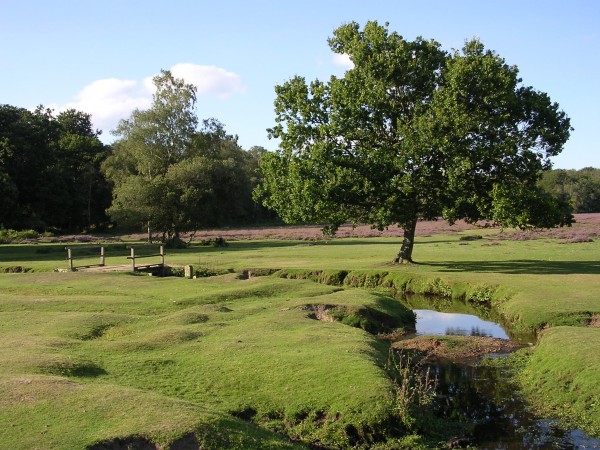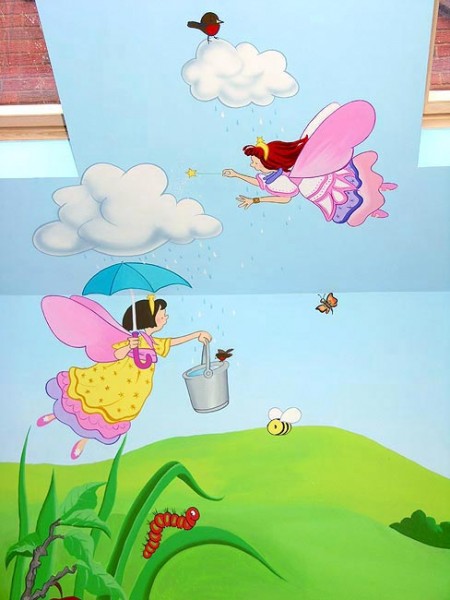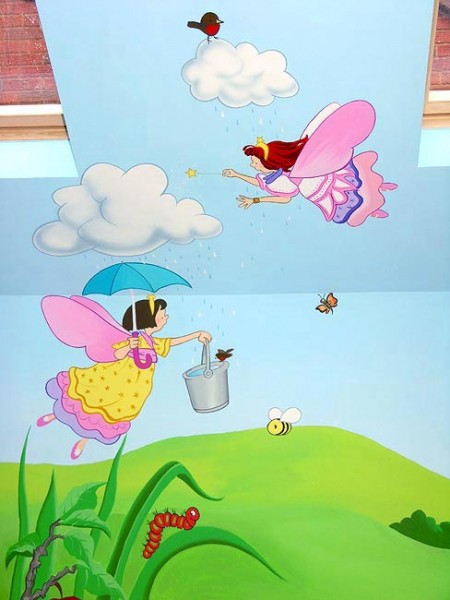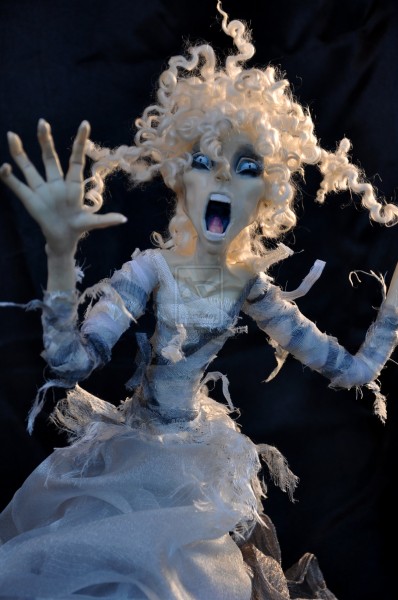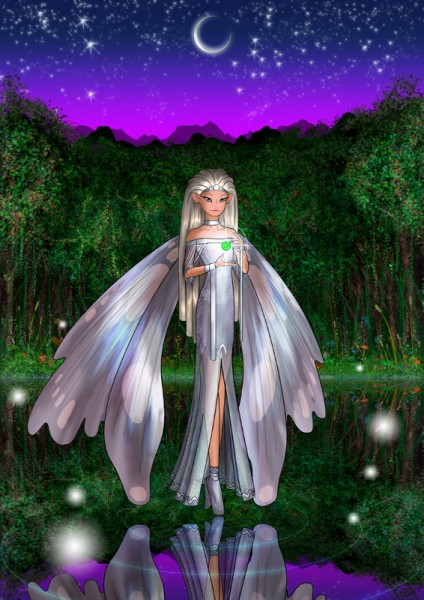Some were led away by the Fairies, as was a Hind riding upon Hakpen with corne, led a dance to y.e. Devises. So was a shepherd of Mr. Brown, of Winterburn-Basset: but never any afterwards enjoy themselves. He sayd that y.e. ground opened, and he was brought into strange places underground, where they used musicall Instruments, violls, and Lutes, such (he sayd) as Mr. Thomas did play on. Aubrey in the seventeenth century.
Tag Archives: Fairy Sightings
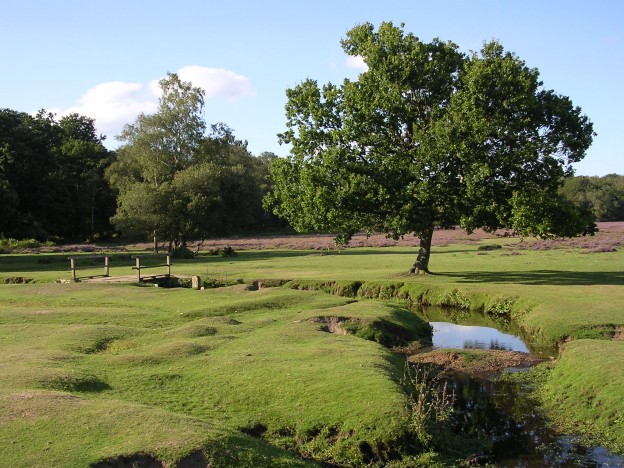
New Forest Fairies (Hants)
Miss E. Woodford-Grimes of Highcliffe-on-Sea, Hants., who at the time of writing was the Local Representative of The Poetry Lovers’ Fellowship, related an experience that had occurred in the early spring of 1938. “I had been ill,” she explained, “and no doubt was in what is called a receptive state. I was recuperating at the home of Miss Ailsie Hall, who was then living at Brockenhurst in the New Forest. She and I went walking in the clearing on a hillside towards a wood on the edge of the forest proper. Both of us were interested in poetry and drama, and I remember we were talking of the historical plays of Shakespeare and saying how clever it was to telescope the periods without obscuring the facts. On going up the slight incline we stopped suddenly whilst staring at something. Then we looked at each other and I said ‘Do you see what I see?’ Her answer was ‘Fairies, and they’re dressed in blue.’ They would be from 30 to 50 feet away, and we stood watching while they danced rhythmically as if to music, although we could hear nothing but a soft wind like a sigh. There were no other people or animals about, and we said afterwards that if we had attempted to go nearer or to make a sound they would have vanished quickly. As it was, we stood some moments before they faded.” Marjorie Johnson, Seeing Fairies
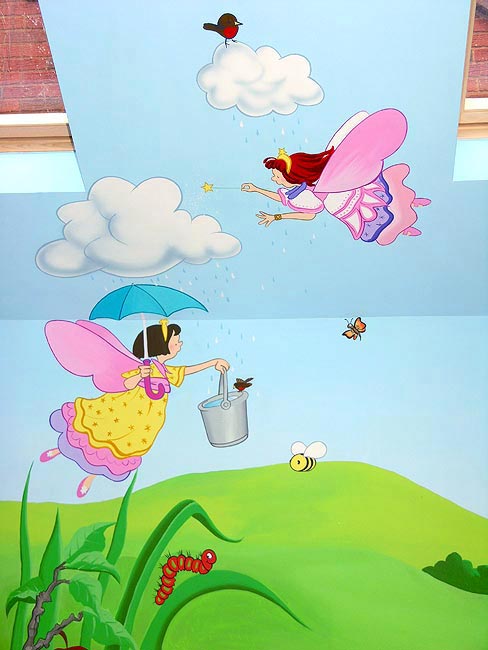
Portsmouth Bedroom Fairy (Hampshire)
One morning in 1950, when Mrs. Mary Johnson of Stanishaw, Portsmouth, Hants, was lying in bed after her husband had gone to work, she had a very strong feeling that she was being watched. She turned her eyes to the fireplace, and there on the big old-fashioned mantelpiece stood a little man wearing a green cap and suit. His face was quite brown, and he appeared to be very old. She experienced no surprise at seeing him, but what did surprise her was his height of two feet, for he was much taller than she had imagined a gnome to be. He gave her a really wide grin, and she said “Hello” to him; then he vanished. “At least,” she explained, “I could see him no longer, but felt sure he was still there. He had been visible for perhaps three to four seconds.” As in the case of some of the other contributors, Mrs. Johnson said she was at that time feeling “extremely happy”, and she thinks that is why she saw him. Marjorie Johnson, Seeing Fairies
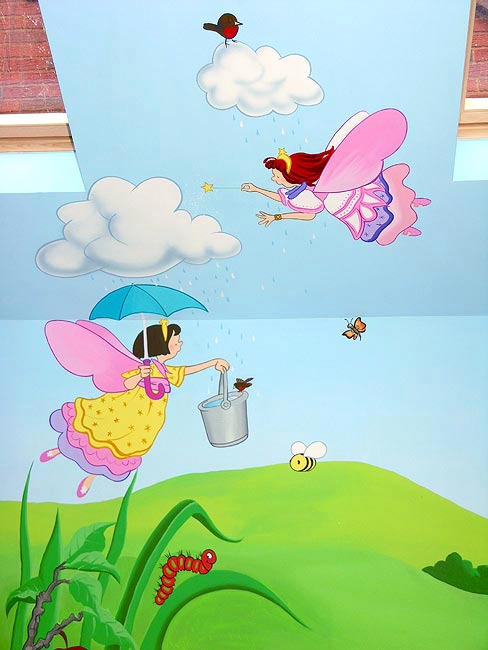
Quinsy Fairies (Hampshire)
Another instance of how the Little People brought healing came from Mrs. D. Goddard of Totton, Hants. When she was ill with quinsy she sensed quite definitely two little men – one on the top, and the other on the end, of her bed. “They were about six inches high,” she said, “and had such pink little faces. Their beards were not made of hair, but something much finer in texture. They radiated happiness and love, yet gave the impression of much strength of purpose and energy. They were unlike anything physical. They seemed to be throwing a kind of gossamer thread backwards and forwards to each other, and this went on for several minutes. I recovered very quickly, although my throat had been so bad. I know now that the thread was just a materialised form of healing power.” Mrs. Goddard added that she felt a sense of loss when they seemed to go away, and a feeling of regret that the ordinary person is unaware of the presence of such brings. Marjorie Johnson, Seeing Fairies

Warnford Fairies (Hampshire)
My next sighting was at Warnford, a tiny hamlet next to West Meon. There was a small horse-chestnut tree growing on the road-side, and while I was looking up, admiring the flowers, I noticed a little fairy balancing on one of them. My thought ‘Oh, fancy a fairy in a tree’ was answered with ‘I am a tree-fairy;’ and then when I showed surprise she added ‘Only the ones with flowers on.’ She seemed more solid than the other fairies I had seen, and was quite bold in comparison. I think the method of communication was mental. Marjorie Johnson, Seeing Fairies
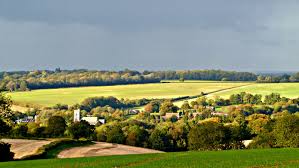
West Meon Fairies (Hampshire)
I saw fairies again in the village of West Meon in late June, 1943. I had offered to help pick fruit in a garden attached to a large house there. I did not know the lady of the house, and had only seen her once or twice. After we had finished fruit-picking she said ‘I’d like you to see my special garden, one I made in memory of my son after he had passed over: we entered it by a wrought iron gate, and I found myself standing in a very lovely walled garden, which was peaceful and secluded, and ablaze with colour. The atmosphere was so wonderful that I often recapture it. Soon I became aware of numbers of fairies tending the flowers and moving swiftly amongst them, and also some little men who were paying special attention to the roots. My companion turned to me and said ‘Ah, you can see them; I knew you would. That was why I brought you in.’” Marjorie Johnson, Seeing Fairies

Wood Oven Pixie (Hampshire)
In the kitchen of her previous house in Fleet, Hampshire, about the year 1927, Mrs. Esme Fielding was leaning against a table facing: an old-fashioned range four feet away. It was the kind that had an oven each side, one of which she kept hot for cooking, while the other was always cool, with its door generally open about eight inches because the gardener used to put in it some wood to dry, which he had picked up in a copse behind the house and chopped up for kindling. A few hundred yards from the house was some rough land, part of which consisted of trees and wild rhododendrons; the other part was used as a golf-course. Mrs. Fielding said that the last thing she was thinking about was pixies, when partly out through the open door of the “wood-oven” came a little brown man about a foot high, and then, on seeing her, back he went into it. “That’s the only way I can describe him,” she said, “and that was the end of it! Could he really have been a brownie who had come in with the wood?” Marjorie Johnson, Seeing Fairies
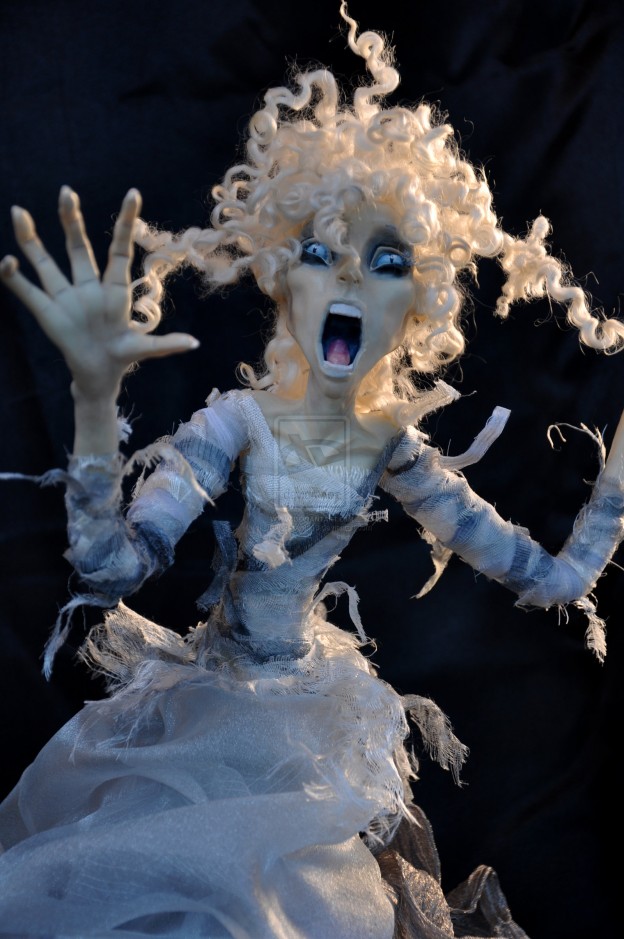
Hampshire Banshee in Ireland?
It was during our first visit to Ireland in September 1948,” recounted Mr. William C. Gall, M.P.S., of Emsworth, Hants, “that my wife Eve and I went with our hostess to spend a day or two at her brother’s house at Killagally, south of Athlone. It was a big, Georgian house, almost a mansion, built on the ruins of an ancient nunnery, but being Ireland, and remoter Ireland at that, it had no modern conveniences, such as gas or electricity. Thus, it happened that in the evening we were gathered round a log fire in a huge and lofty eighteenth-century room, dimly illumined by two candles set in tall silver candlesticks, engaged in conversation such as one can enjoy only in Ireland. It was a still night, but pouring with rain; the great window shutters were closed; there was no other house within a mile; and it was half a mile to the lodge gates on the highway. We were listening to reminiscences of the past, when I heard a most unearthly howling noise from somewhere outside. I looked at my wife and she looked at me, but the others continued talking as though they had not heard it. Again there came that uncanny wailing, more prolonged this time, and still they made no remark although it was manifest that they were rather disconcerted. Our query ‘Whatever was that?’ passed unheeded. When for a third time there was that eerie howling, rising and falling in pitch and even more persistent and insistent than before, it was impossible to ignore it, but our host’s only reaction was to rise abruptly and say, ‘I think we’re stirring them up too much. We had all better go to bed.’ Without more ado, he bade us ‘Goodnight’ and left the room. There was nothing more to be said, so each of us lighted our candles and went to our rooms. Once we were in our bedroom, by force of habit I looked at my watch, which showed a little after ten o’clock. My wife, Eve, said to me, ‘Whatever was that weird howling; one would think it was a Banshee.’ I replied: ‘Well, it was certainly not a dog, or a fox, or an owl.’ (It was quite unlike any of these and the persistent, mournful rising and falling wail sent cold shivers down the spine.) ‘I believe it was a Banshee, and if so it is a bad omen for someone here tonight.’ It was with subdued and apprehensive feelings that we eventually settled down for the night. The next day our friends absolutely ignored any attempt to refer to the matter, and in the course of a really delightful holiday we soon forgot our fears and forebodings and the whole affair sank into the background of our minds. The sequel came when our holiday was over and we returned to our little cottage at Waterlooville in Hampshire, where we were living at the time. There we learnt, to our distress, that a very dear friend and neighbour had been terribly injured by two burglars and was critically ill in hospital. He was the owner of a laundry situated at the rear of our cottage and he lived in a house at the end of the road, so he had to pass our cottage on his journeys between his home and the laundry. On the very night on which we heard the Banshee, our friend had occasion to visit the laundry office, which was situated upstairs, on the first floor. He entered the building, using an electric torch to see his way, and as he went to mount the stairs to the office he was attacked by the two men concealed there, who struck him down and then hurled a large cash-box at his head, which gave him a dreadful injury. He lost consciousness but regained it again some time and then attempted to reach his home. It must have been a nightmare journey as he crawled along, weak with loss of blood and with spells of unconsciousness. At last he reached the door of our cottage and he has a distinct recollection of sitting on the doorstep, fervently wishing that we were at home and could come to his aid. Eventually he did manage to reach his home just as his son was about to go in search of him. For a long time his life was despaired of, but brilliant surgery and careful nursing restored him to health once more. Checking over the details with him when he was well enough to discuss them, we discovered that he was sitting on our doorstep mentally calling us in his distress, at the very same time that we were listening to that wailing Banshee in Ireland.” Marjorie Johnson, Seeing Fairies
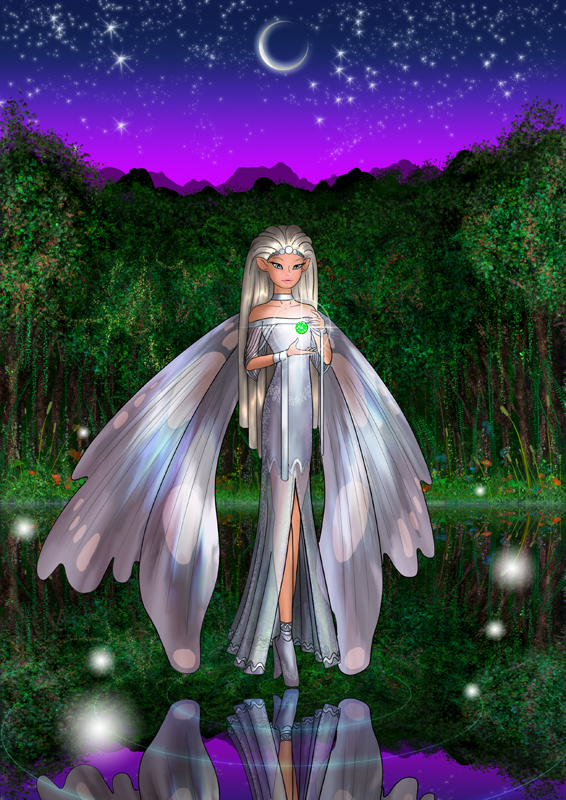
Fairy Invasion (Hampshire)
In September 1952, Mr. and Mrs. Gall of Hampshire had spent a long, happy day making a new garden, and having finished it, they went indoors and relaxed in armchairs before the fire. They were sitting there in the twilight, talking over the day’s work, when they saw a tiny fairy flying round the room. It circled twice, and then disappeared through the wall as suddenly as it had come. The little figure, some nine or ten inches in height and human in shape, shone with a brilliant silvery radiance, and had transparent and faintly luminous wings. It was visible for about fifteen seconds, and its disappearance left Mr. and Mrs. Gall looking at each other in amazement, asking “Did you see what I saw?” Marjorie Johnson, Seeing Fairies
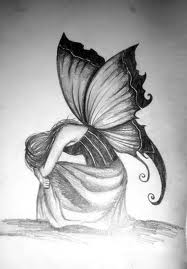
Blind Fairies (Bristol)
Miss Eva Longbottom, L.R.A.M., A.R.C. M., of Bristol, a charming vocalist, who has been blind from birth, told us in an interview: I have seen many fairies with my mind’s eyes (that is, clairvoyantly ) . They are of various kinds, the ones I see. The music fairies are very beautiful. i Argent’ de- scribes them, for they make you think of silver, and they have dulcet silvery voices. They speak and sing, but more in sound than in distinct words — a language of their own a fairy tongue. Their music is a thing we cannot translate. It exists in itself. I don’t think Mendelssohn has truly caught it, but Mr. Coleridge-Taylor’s music reminds me of the music I have heard from the fairies themselves ; his fairy ballads are very charming. ‘Then there are dancing fairies. Their dancing is dainty and full of grace, a sweet old style of dance, without any tangles in it. I am generally alone when I see them, not necessarily in a woodland, but wherever the atmosphere is poetical. They are quite real.’ Another kind is the poem fairies. They are more ethereal, and of a violet shade. If you could imagine Perdita in the Midsummer Night’s Dream, translated from the stage into a real fairy, you would have a good idea of the poem fairy. She has a very beautiful girlish character. The same might be said of Miranda, but she is more sentimental. ‘The colour fairies are also most interest- ing. If you can imagine each colour trans- formed into a fairy you may get an idea of what they are like. They are in airy forms and dance and sing in the tone of their colours. I have not seen any brownies, as I do not take so much interest in the domestic side of the fairies’ life. When I was young I had it so much impressed on me that fairies were imaginary beings that I would not believe in them, but when I was about fourteen I began to realize them, and now I love them. Perhaps it was the deeper study of the arts that brought them to me. I have felt a sympathetic vi- bration for them and they have made me feel that we were friends. I have had a great deal of happiness and good fortune in my life, and perhaps I can attribute some of that to the fairies.’ Doyle, Coming of the Fairies 168-170
